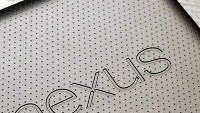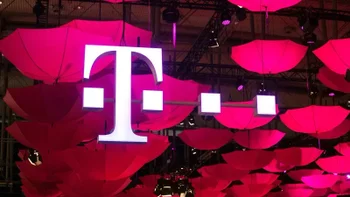Asus explains what it took to make the Nexus 7 in just four months

If you asked us a year ago what company would make the next Google Nexus device, we might have bet on Samsung, HTC or Motorola. We wouldn’t have thought about Asus, yet here they are making the Google Nexus 7, the first tablet wearing the Nexus branding and an extremely affordable price of $199 for the basic 8GB version. We’d also say deservedly so as the Asus Transformer series have proven to be one of the most successful Android tablets.
But how did Asus manage to meet all of Google’s requirements? Moreover, how did it do everything in just the four months it had since Google contacted it? Now, we’re learning more details about the making of the Nexus 7 straight from Asus executives.
Benjamin Yeh, the head of Asus UK, spoke with Forbes about the Nexus 7, sharing details about the enthusiasm at Asus and how the company teamed up with Google and sent its engineers to California to speed up the process.
Most interestingly, Yeh explains that Asus wanted to meet three criteria set by Google - the device had to be fast, cheap and good. That sounds impossible unless you’re doing charity, so Asus had to resort to some innovative creative thinking. Here’s what it did:
source: Forbes
“Our top executives met Google’s top executives at CES to talk about opportunities and how they saw the future market. That’s when we came up with the idea of the Google Nexus 7 by Asus. That was in January, and mass production started in May.
So, that was four months. For a mass-market device, from concept to mass production, we’re talking about six to twelve months. Six months is very tight.
Immediately, we sent a complete design team to Mountain View, to work with Google. Google also sent seven engineers to Asus to work on the project as well. So, that’s what we had in the design team – and then there were our partners in the supply chain – key components and so on. Everyone was excited about the concept, but we needed to work together to get it through the supply chain. And it wasn’t just Asus and Google who were excited – our suppliers were too. Everyone wanted to be part of the game!
Once the hardware and software was starting to come together, both Asus and Google looked for ways to improve it even more. How good would a 7″ device be if it weighed as much as a brick and was as thick as textbook? In order to keep both of those specs down, they created a new LCD design called Asus TruVivid, that involves less glass, to not only make for a thinner device, but to improve the user experience as well.”
So, that was four months. For a mass-market device, from concept to mass production, we’re talking about six to twelve months. Six months is very tight.
Immediately, we sent a complete design team to Mountain View, to work with Google. Google also sent seven engineers to Asus to work on the project as well. So, that’s what we had in the design team – and then there were our partners in the supply chain – key components and so on. Everyone was excited about the concept, but we needed to work together to get it through the supply chain. And it wasn’t just Asus and Google who were excited – our suppliers were too. Everyone wanted to be part of the game!
Once the hardware and software was starting to come together, both Asus and Google looked for ways to improve it even more. How good would a 7″ device be if it weighed as much as a brick and was as thick as textbook? In order to keep both of those specs down, they created a new LCD design called Asus TruVivid, that involves less glass, to not only make for a thinner device, but to improve the user experience as well.”
“The device had to be thin and light, with a weight under 340 grams. So to get that lightness, normally the CPU would be small [low-powered]. But to get media playback, and particularly high definition media, the processor has to be powerful. The strong CPU in a very small space is difficult. And also the screen: you want it to be very responsive and also to have multitouch . So normally the LCD should be thick.
So, for the LCD module, we used a special design, which we called Asus TruVivid. That is actually two technologies together – the first is a one-glass solution, and the second is lamination.
The traditional way to make a tablet touchscreen actually uses four pieces of glass. You have the LCD back panel, then the back glass and front glass, with the liquid crystal in the middle. On top of the front glass you have the touch sensor glass. And then on top of the sensor glass you have the protective glass. So with the one glass solution, we put together the protective glass and the sensor glass. So the sensor is just a film attached to the glass, to make it thinner. And that also makes it lighter.”
So, for the LCD module, we used a special design, which we called Asus TruVivid. That is actually two technologies together – the first is a one-glass solution, and the second is lamination.
The traditional way to make a tablet touchscreen actually uses four pieces of glass. You have the LCD back panel, then the back glass and front glass, with the liquid crystal in the middle. On top of the front glass you have the touch sensor glass. And then on top of the sensor glass you have the protective glass. So with the one glass solution, we put together the protective glass and the sensor glass. So the sensor is just a film attached to the glass, to make it thinner. And that also makes it lighter.”
Now, finally, the product is out there for everyone to buy and we love it - it’s really one of the best products for such a low price. Check out the full story of Asus making the Nexus 7 below.
source: Forbes
Follow us on Google News









![A new Android bug is making it impossible to install new apps. Are you affected? [UPDATE]](https://m-cdn.phonearena.com/images/article/176703-wide-two_350/A-new-Android-bug-is-making-it-impossible-to-install-new-apps.-Are-you-affected-UPDATE.webp)

Things that are NOT allowed:
To help keep our community safe and free from spam, we apply temporary limits to newly created accounts: